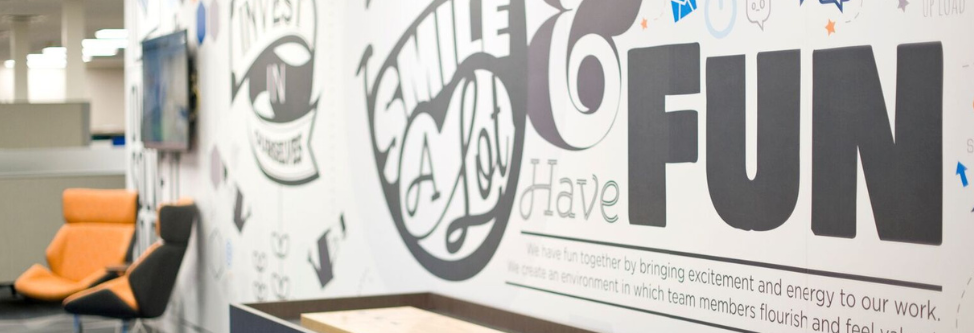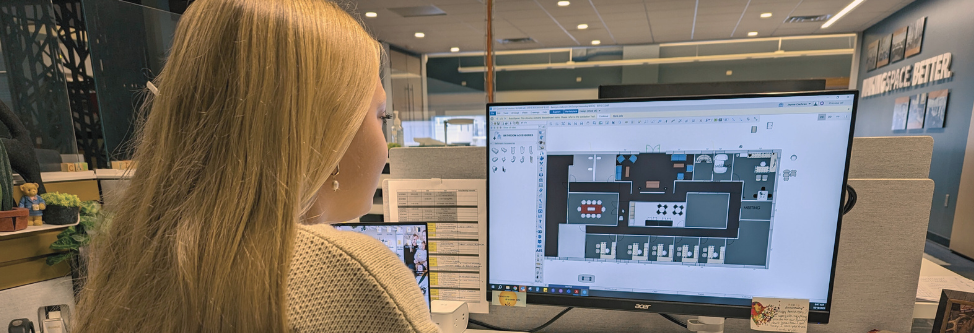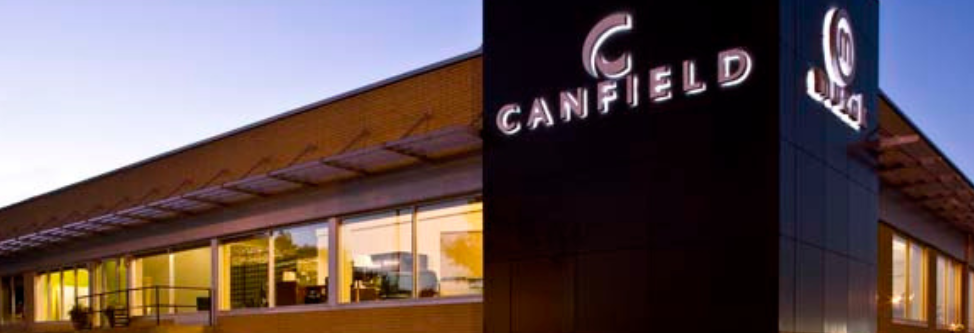
10 Ideas to Design for Workplace Zen
Appealing to the 5 senses for balance is the start of finding workplace zen
This year, many of us are on a personal journey to find Zen—slowing down to a steady, productive pace, simplifying our lives, rejecting clutter, and choosing nature over technology (when we can!). And as the lines blur between work life and personal life, we’re looking for Zen everywhere—at home and at work.
Designing spaces that promote Zen in the workplace can help employees reduce stress and anxiety, encourage relaxation when needed, and help improve focus, performance, and overall happiness. But what makes a space Zen? And how do you design for it? It’s all about simplicity. Look to things you find in nature and the experiences they provide. Think about design elements that appeal to the five senses.
Sight
1. Daylight or white light
According to an article on Psychology Today, a recent study showed that people who work in offices lacking windows experience decreased vitality, lower quality of life related to physical problems, and increased daytime dysfunction. The study concluded that this was connected to reduced exposure to daylight, which affected sleep quality and the natural biological, mental, and behavioral rhythms that respond to light and darkness.
To keep natural rhythms in sync, the study’s co-author, Ivy Cheung of Northwestern University, recommends placing an “emphasis on light exposure and lighting levels in current offices as well as in the design of future offices.” Open floorplans, fewer solid or opaque walls, and more moveable glass walls help to flood areas with the natural light people need.
2. Colors
What’s your favorite color? Just about everyone has one. To each of us, different colors evoke different moods and feelings. Though we each may have our own “favorite color,” there are some generalizations that can be made about color, based on simple observation and experience. Think about colors you’d call “subdued,” for example. They evoke similar feelings in us—subdued and relaxed. It’s these colors that can help people find Zen and feelings of balance at work. They are grounded in nature—the shades of the sky, ocean, earth, stone, plants, and animals.
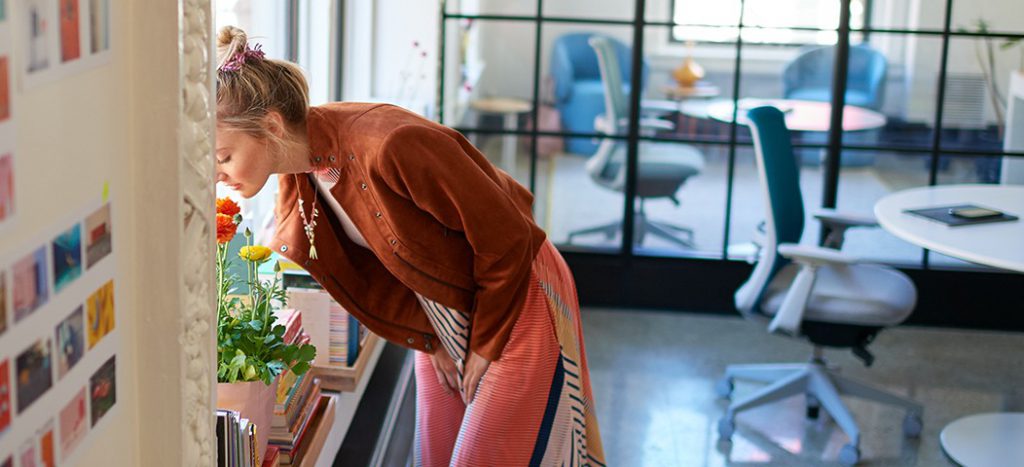
Smell
3. Aromatherapy
It’s a widely held belief that appealing to your sense of smell is one of the most powerful ways to trigger feelings and emotions. That may be one of the reasons that aromatherapy and the use of ultrasonic oil diffusers have become so popular. And now, aromatherapy is finding its way into the workplace. It seems a natural fit, as certain natural fragrances can help us concentrate, stimulate memory, feel more energetic, soothe our nerves, and de-stress. According to an article on Inc., various researchers found that these fragrances can offer Zen-like benefits:
- Lemon – a bright smell with universal appeal to help increase motivation and decision-making capabilities.
- Rosemary – known to stimulate the mind and memory.
- Peppermint – invigorating, clean, and fresh to stimulate the brain and rejuvenate the senses.
- Frankincense – may activate anti-depressive pathways in the brain to lower anxiety.
4. Fresh air
Humans have an inherent need to be a part of nature and the outdoors. There’s something about breathing in fresh air and experiencing the fragrances of nature that gets us to a more relaxed state. Not only can we use our time in the outdoors to recharge, we often find that bringing our work outside can help us focus—sometimes to such a degree that we don’t even feel like we’re working. Being outside simply affirms our connection to the natural world. Designing patio spaces for a working environment and filling them with comfortable, homey furnishings allows people to work solo or grab a colleague and collaborate in the great outdoors. For limited urban space, rooftop terraces and decks, with greenery incorporated, are being added and used as key gathering spots, as well.
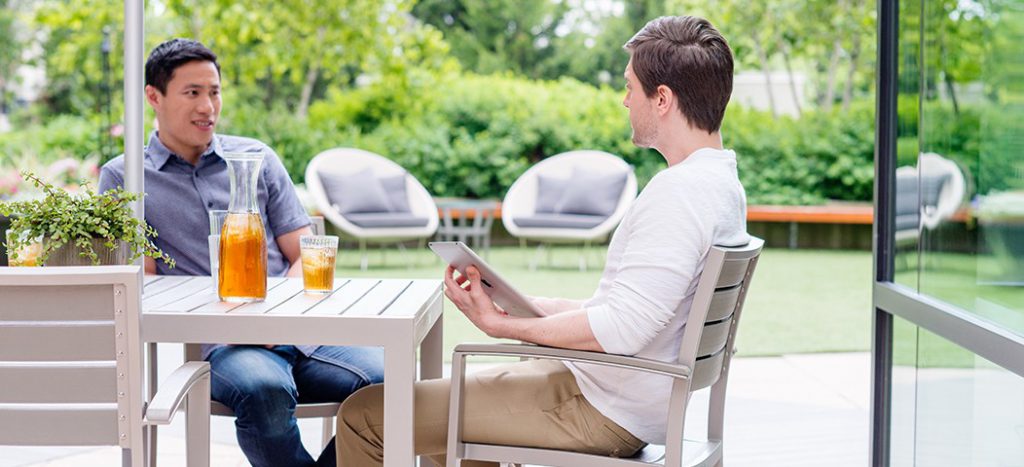
Sound
5. Speech privacy
According to a Haworth white paper on acoustics and privacy, numerous studies have pointed to noise and lack of privacy, together, as a major cause of workplace dissatisfaction. With the limited area available in floorplates as of late, a lot of businesses are looking to open office environments. This has become a challenge for designers—creating the balance of Zen with open spaces that also offer privacy. Look to moveable walls made of frameless glass to keep the openness, light, and line of sight, while blocking sound transmission. Sound absorbing ceiling panels and rugs or carpeting can also help. Another worthwhile investment can be a sound masking system that emits background noise specifically tuned to volume and frequency levels that cover sound.
6. Apps
While open plans can help encourage collaboration and socialization, people still need spaces for focus and private conversations that don’t disturb others around them. In a workspace where team members are working on individual tasks, personal sound generators can help. A simple way to give everyone the sound environment they desire is to allow or offer the use of sound apps, such as Calm and Coffitivity, through computers and other mobile devices. Listeners just plug in a set of headphones or earbuds, and select from a choice of music, ambient sounds, or white noise-type options.
Taste
7. Healthy food and spaces
We all know that we need to eat healthy foods to keep our body functioning optimally. However, it’s often easier for us to grab something fast-food-ish to scarf down quickly—especially at work. But, what if we looked to the balance of Zen on workplace design? The first step would be to establish an on-site cafeteria or café area where employees can get a healthy meal. Then, take it to the next level by designing the spaces in and around the cafeteria to double as comfortable working spaces. Think lounge seating and occasional tables, bar-height tables and chairs, natural lighting, and wifi connectivity. It becomes a place where people can re-energize with some good food and get some work done too.
8. Lots of water
According to the US Geological Survey, the human body is made up of about 60% water. You don’t need to be a doctor or scientist to understand that if the water your body loses throughout the day doesn’t get replenished, bad things happen. We need water to keep our body’s systems running smoothly. Everything from digestion and respiration, to cell regeneration and brain function, and more, depends on keeping the body adequately hydrated. Zen requires balance in your whole body and mind. Making sure that people have ready access to amenities such as drinking fountains, kitchenettes, and water coolers is essential for maintaining that physical and mental balance.
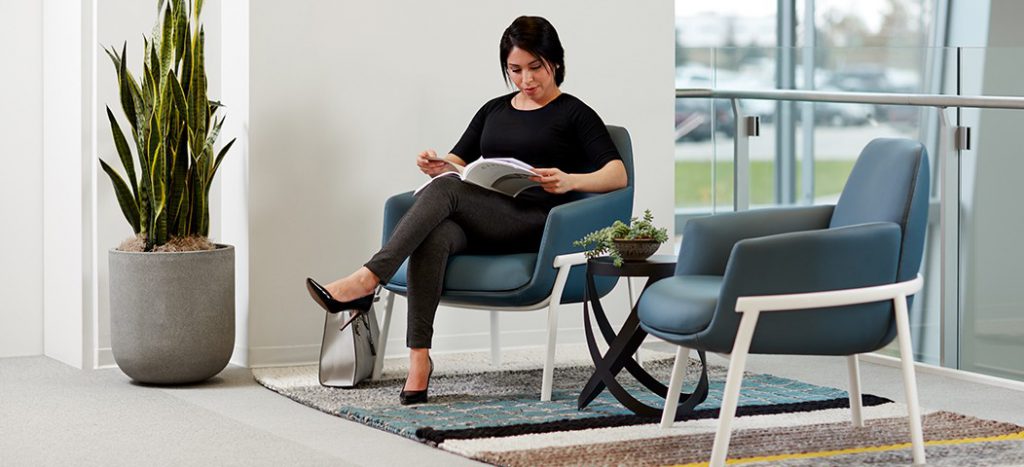
Touch
9. Soft materials
One of Interior Design’s 5 Design Trends that will Dominate is the creation of comfort spaces where designs feature curved lines and soft, tactile experiences. It’s all about bringing the comforts of home into the ancillary spaces of the workplace. Furnishings are of the lounge variety, and free from harsh edges. Along with softer or natural lighting, body contouring sofas, cushy pillows, and luxurious poufs—all covered in lush, textured fabrics, like velvet and bouclé—provide a cozy atmosphere that allows the mind to focus on the task at hand, rather than worrying about being comfortable.
10. Comfort and ergonomics
When tasks require focus at work, we often turn to more traditional workspaces with a desk or table. Designing these workspaces for Zen starts with creating a useful space that allows employees to feel at ease to do their best work. This means making sure that people are comfortable and that the technology and tools they need are within an easy reach. Selecting the right chair to support people for the amount of time they spend seated and the work they do is important. The longer the sit time, the more important it is for good physical support. Ergonomic accessories, like adjustable monitor arms and height-adjustable desks provide flexibility for people to stay comfortable and move around a little during the day, changing positions when they feel like it. Check out these ergonomic desk set-up tips for more details on setting up an ergonomic workstation.
Designing for Zen is essentially about designing for the senses, the whole self, and well-being. For more, read Dr. Mike O’Neill’s Workplace Design Tips for Well-Being research brief.

